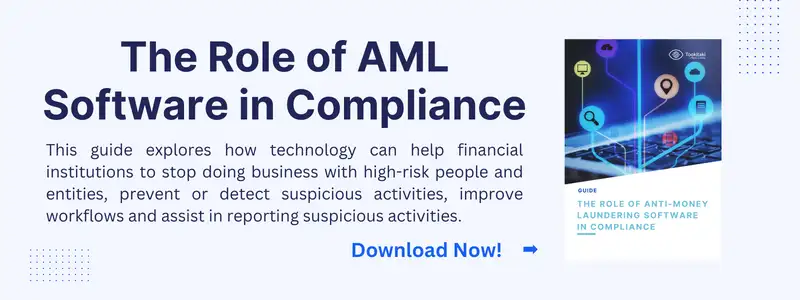Money Talks: Anti-Money Laundering Analytics for Financial Security
Money laundering resembles an unending game of hide-and-seek. On one side, you have people breaking the law, trying to clean their "dirty money" by making it look like it came from legal sources. According to the United Nations Office on Drugs and Crime (UNODC), an estimated 2-5% of global GDP, or $800 billion to $2 trillion, is laundered annually.
On the other side, you have the authorities, like the police and financial watchdogs, who are always on the lookout to catch these lawbreakers. But here's the thing: the bad guys are getting smarter. They're using more advanced tricks to hide their actions.
So, what can we do? Well, that's where Anti-Money Laundering Analytics (AML Analytics) comes in. This is a smart and modern way to fight back. It uses high-tech tools like computers and special software to quickly spot suspicious activities, helping the good guys stay one step ahead in this ongoing game.
Let's delve into the universe of anti-money laundering analytics, its key elements, and ways to implement it successfully.
AML Analytics and Its Advantages
The advantages of employing AML Analytics are multifold:
- Efficiency: Imagine you had to read a thousand-page book to find just a few important sentences; it would take forever, right? Automated data analytics is like a super-fast reader that can quickly find and highlight those important parts for you. This is particularly beneficial for individuals responsible for ensuring legal compliance, as it greatly saves time and effort.
- Accuracy: You know how detectives in movies always find that one tiny clue that solves the whole mystery? Advanced algorithms are like those detectives. They're very good at finding even the smallest signs of illegal activity in a huge sea of financial transactions. This means they can catch bad behaviour more effectively than older methods.
- Scalability: Let's say your lemonade stand grows into a big chain of stores. You'd require more supplies, a larger workforce, and better ways to manage your money. Scalability in AML Analytics is similar. As a bank or financial institution gets bigger, or as financial crimes get more complicated, these smart tools can easily be expanded or upgraded to handle the extra load.
Key Components and Advancements in AML Analytics
Machine Learning Models
Do you know how a baby learns by watching and copying what others do? Machine learning models are somewhat similar. They study a lot of data from past financial transactions to understand what's normal and what's fishy. Over time, they get really good at spotting things that don't look right. The cool part is, they do this automatically and give you updates in real time, so you can stop bad things from happening right away.
Real-time Data Processing
Imagine you're trying to catch a train, but the schedule is always changing. If you don't get updates instantly, you could miss your ride. Financial transactions are the same; they happen all the time, day and night. That's why AML data analytics software is designed to process big chunks of information quickly. This way, you get quick insights into any suspicious money movement, enabling you to act before it's too late.
Predictive Analytics
You've heard of weather forecasts, right? They predict if it's going to rain or be sunny tomorrow so you can plan your day. Predictive analytics in AML is a bit like that but for financial risks. It looks at tons of data to guess what might happen in the future. This allows banks and other money-handling places to see potential risks before they become big problems, so they can take action early.
Advanced Algorithms
Think of advanced algorithms like a team of super-smart detectives. Rather than focusing on a single perspective, they analyze financial transactions from various angles, enabling them to gain a comprehensive understanding of the situation. They look at who is sending money, where it's going, how often, and lots more. This provides financial institutions with improved insights into the areas of high-risk activities, enabling them to intervene and take appropriate action.
.png?width=810&height=810&name=Components%20AML%20Analytics%20(2).png)
Challenges and Solutions in Implementing AML Analytics
Data Privacy Concerns
One of the most pressing challenges in AML analytics is balancing security with data privacy.
Solution: Employing encryption and secure data storage techniques can address most privacy concerns.
False Positives
In their zeal to detect all illicit transactions, AML analytics systems can sometimes flag legitimate ones.
Solution: Refining algorithms and regular system audits can substantially reduce false positives.
Complexity and Cost
Implementing an advanced AML system can be complex and costly, particularly for smaller institutions.
Solution: Cloud-based AML solutions can bring down costs and simplify the implementation process.
Best Practices for AML Analytics Implementation
Conduct a Needs Assessment
Before implementing any solution, it's crucial to conduct a comprehensive needs assessment to identify the specific requirements and challenges of your financial institution.
Test Rigorously
Prior to full deployment, subject the AML system to rigorous testing to identify any bugs or vulnerabilities.
Continuous Monitoring and Updates
AML threats evolve, and so should your analytics. Make sure to keep the system updated with the latest anti-money laundering measures.
Involve Compliance Teams
Compliance teams play a very important role when the new system is being set up. They make sure that the system follows all the rules and laws that are needed.
The Regulatory Landscape: Compliance and AML Analytics
Navigating the maze of regulations and compliance guidelines is a critical aspect of any AML analytics solution. Financial institutions must consider both domestic and international laws when implementing these systems.
FATF Guidelines
The Financial Action Task Force (FATF) provides a global framework for combating money laundering with its periodically updated recommendations. Ensuring compatibility with these guidelines is a must.
GDPR and Data Privacy
Laws about keeping data private, like GDPR in Europe, are very strict. Companies need to make sure that the tools they use to analyze financial activities and prevent money laundering also follow these rules.
Local Regulations
Make sure not to forget about the rules that apply to your area, like laws from your country or region. Talk to legal experts to be sure you're following all the right rules.
The Future of AML Analytics: What Lies Ahead
As we dive deeper into the digital era, financial crimes are becoming even more advanced. But don't worry, AML analytics are also getting better to keep up with these changes.
AI and Big Data
The combination of Artificial Intelligence (AI) and Big Data will greatly enhance AML analytics. With these technologies, large amounts of data can be analyzed in real-time, leading to more effective detection.
Blockchain Technology
Blockchain technology introduces an added level of security and transparency, making it more challenging for criminals to manipulate financial systems.
Real-time Cross-border Monitoring
International transactions often present loopholes that money launderers exploit. Future AML analytics systems will provide real-time, cross-border monitoring to seal these gaps.
Key Takeaways: Are You Prepared for the Future?
The battle against money laundering is an ongoing struggle. AML analytics offers a formidable weapon, but its implementation comes with its set of challenges.
- Efficiency and Scalability: AML analytics tools are invaluable for automating compliance and can scale to meet the demands of complex financial networks.
- Precision: Advanced algorithms and machine learning models are making these systems increasingly accurate.
- Regulatory Challenges: Compliance remains a complex issue, requiring a thorough understanding of both local and international laws.
- Continuous Adaptation: As financial crimes evolve, so must our tools and strategies.
Conclusion: The Imperative of Vigilance
Anti-money laundering analytics goes beyond mere jargon; it's an essential tool in the ongoing battle against financial crimes. By grasping its essential elements, tackling its obstacles, and following recommended methods, businesses can strengthen their defences against money laundering activities.
AML analytics is revolutionizing the battle against money laundering. By leveraging its diverse components, spanning machine learning to predictive analytics, it introduces a thorough and multifaceted strategy for bolstering financial security. Although obstacles persist, especially concerning privacy and false positives, the benefits significantly outweigh the potential drawbacks.
Therefore, it's the collective responsibility of financial institutions to invest in sophisticated AML analytics tools, such as the Anti-Money Laundering Suite of Tookitaki, to safeguard not just our assets but also the integrity of the financial system at large.
Anti-Financial Crime Compliance with Tookitaki?




